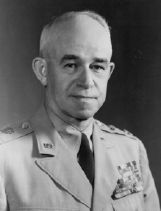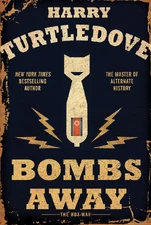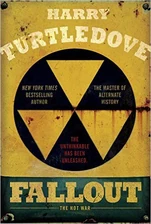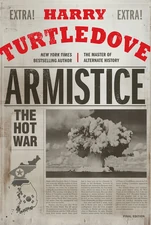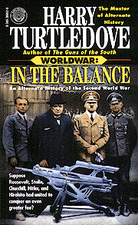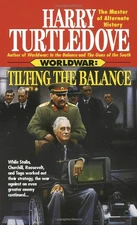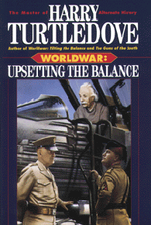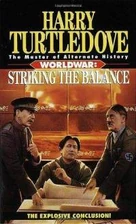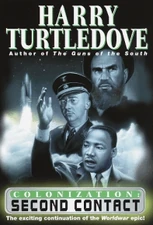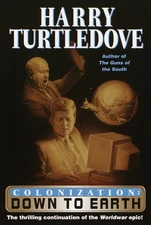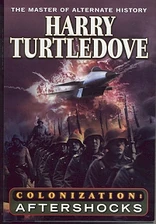| ||||||||||||||||||||||||||||||||||||||||||||||
Omar Nelson Bradley KCB (February 12, 1893 – April 8, 1981) a United States Army General, serving in North Africa and Europe during World War II. From the Normandy landings through the end of the war in Europe, Bradley had command of all U.S. ground forces invading Germany from the west; he ultimately commanded 43 divisions and 1.3 million men, the largest body of American soldiers ever to serve under a U.S. field commander. After the war, Bradley headed the Veterans Administration and became Chief of Staff of the United States Army. In 1949, he was appointed the first Chairman of the Joint Chiefs of Staff, and the following year oversaw the policy-making for the Korean War, before retiring from active service in 1953.
Bradley was the last of only nine people to hold five-star rank in the United States Armed Forces.
Omar Bradley in The Hot War
Omar Bradley became Secretary of Defense for the United States in June, 1952 during World War III. He was appointed unilaterally by President Harry Truman after the previous Defense Secretary, George Marshall, was killed in the Soviet atomic bombing of Washington, DC.[1]
Omar Bradley in Worldwar
Omar Bradley was one of the most successful generals in United States' war against the Race's Conquest Fleet. He and General George Patton scored a major victory in the winter offensive in 1942. Later, Bradley defeated the Lizard offensive against Denver.
After the Race's fleet arrived in 1942, Bradley became one of the key U.S. generals responsible for successfully defending American soil. In Winter 1942, he and General Patton launched a successful counter-offensive against the Race after its successful attack on Chicago, the first counter-offensive the U.S. had been able to launch. The planned encirclement succeeded, preventing the Race from advancing beyond Chicago.
In 1944, Bradley and General Leslie Groves oversaw the defense of Denver, the city that housed the U.S.'s vitally important atomic bomb program. The battle was fought just outside the city. When the U.S. deployed an atomic bomb against the invaders, the offensive was halted, and the city saved. A ceasefire came shortly after.
Omar Bradley in Joe Steele
Omar Bradley first came to prominence as part of the military tribunal that presided over the trial of the Supreme Court Four.[2] He survived the military purges that came after a soldier attempted to assassinate President Joe Steele in 1937 and became a general during World War II. His first major success came with a landing of US and British troops in North Africa in 1942, driving the German forces out of Egypt through Libya and back to Tunisia.[3] He was also responsible for opening the second front in Europe with the successful landings in Normandy in 1944.[4] With the war won, the Germans tried to surrender to Bradley's and English forces but Steele ordered him to refuse and have them surrender to Soviet forces as had been previously agreed.[5]
The Republican Party tried to recruit Bradley as their presidential nominee in 1952, but Bradley (after some prompting from Joe Steele's allies) declined.[6]
Literary Comment
In the short story, General Dwight Eisenhower plays the same role he did in OTL in Europe. In the novel Eisenhower is sent to Japan while Bradley takes on Eisenhower's OTL role.
References
| Military offices (OTL) | ||
|---|---|---|
| Preceded by George Grunert |
Commanding General of the First United States Army 1943–1944 |
Succeeded by Courtney Hodges |
| Preceded by Dwight Eisenhower |
Chief of Staff of the United States Army 1948–1949 |
Succeeded by J. Lawton Collins |
| Preceded by Adm. William D. Leahy as Chief of Staff to the Commander in Chief |
Chairman of the Joint Chiefs of Staff 1949–1953 |
Succeeded by Adm. Arthur W. Radford |
| Preceded by None |
Chairman of the NATO Military Committee 1949–1951 |
Succeeded by Etienne Baele |
| Political offices (The Hot War) | ||
| Preceded by George Marshall |
United States Secretary of Defense 1952- |
Succeeded by Incumbent at series' end, 1953 |
| |||||||||||||||||||||
| |||||||||||||||||||
| |||||||||||||||||||||||||
